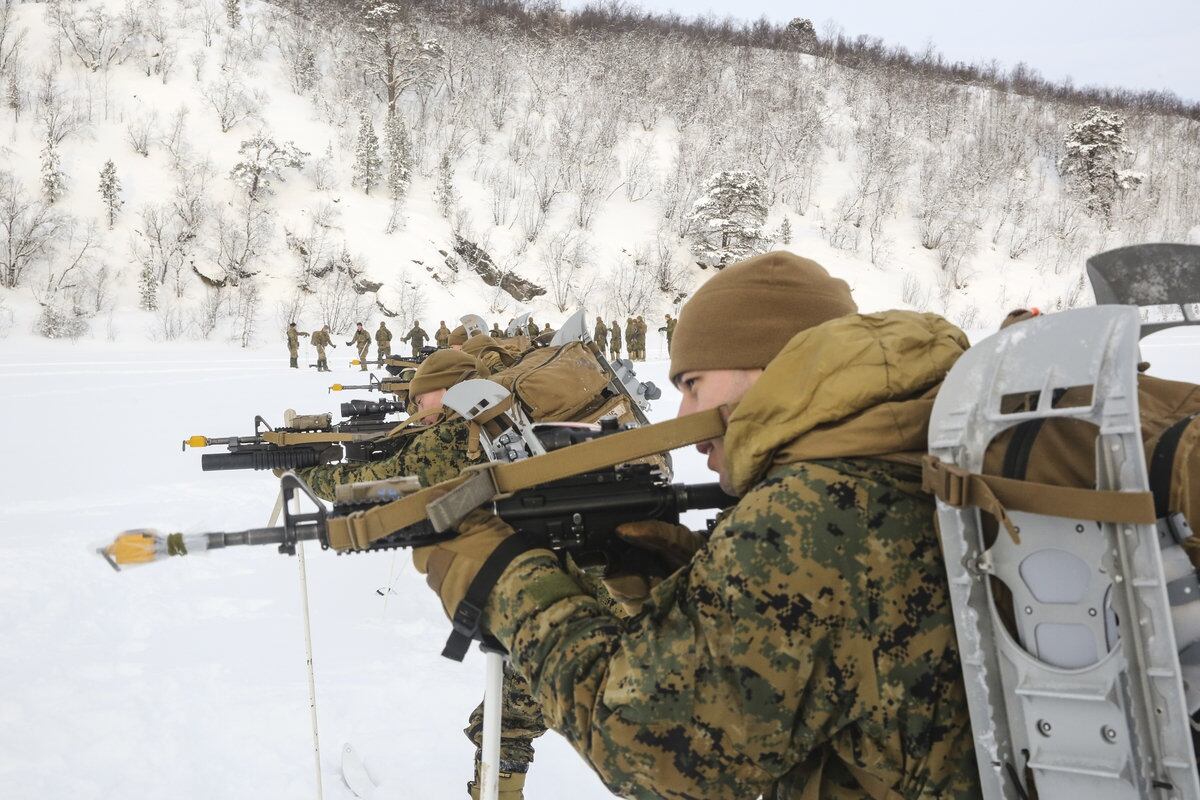HELSINKI ― Opposition leaders in Norway have asked Prime Minister Erna Solberg’s center-right government to explain the precise role of U.S. Marines stationed on a rotating basis in the country.
The presence of the 330-strong Marine Corps unit forms part of expanding cooperation between Norwegian and U.S. forces, particularly in the area of joint multibranch exercises in the Arctic region’s High North close to Norway’s border with Russia.
“There are questions for the government to answer here. It is clear the defense forces needs more funding to improve capabilities and adequately defend Norway. One wonders if U.S. troops are going to be used to plug gaps and weaknesses in Norway’s defenses,” said Liv Signe Navarsete, the Centre Party’s spokesperson on defense.
The prime minister ran on ticket based upon strengthening defense infrastructure in September parliamentary elections. However, increases in military spending and the defense budget in recent years have proved insufficient in meeting all of the Norwegian Armed Forces’ operational needs.
RELATED

Norway’s military is experiencing manpower shortages across all core services. This is particularly the case in the Navy, which is struggling to reach optimum manpower levels to provide full crews to all of its recently acquired frigates and other surface vessels.
The military’s Northern Brigade and rapid response Army units in the High North are also experiencing personnel shortages in specialized skills areas.
Fundamentally, the leaders of the Center, Socialist Left and leftist Red parties want the government to clarify what status and long-term operating role U.S. forces will have in Norway
“There has been no real debate about the role of U.S. forces. There is concern that we may be looking at a significant shift in Norwegian defense policy without an informed debate,” said Audun Lysbakken, leader of the Socialist Left party.
The U.S. Marine Corp is stationed in Værnes, midwest Norway. The Ministry of Defence has described the unit’s central role as “rotation-based training.”
The presence of U.S. Marines in Værnes also forms part of Norway’s broader national security policy, with the Marine Corps serving as an added “credible deterrent” directed at Russia and one that reinforces the elevated visibility of the U.S. and NATO in the region.
The Norwegian government is eager to scale up training with U.S. and NATO forces in Norway. The MoD has formed an expert group to examine ways of expanding collaboration in the specific area of more regular and larger-scale training and exercises with allied forces.
The MoD’s budget for 2018, which delivers a real increase in spending of $350 million, includes a higher level of funding for training and exercises, as well as “snap,” mission-specific drills.
Most of the planned training and exercise activities will be located in the High North and involve Norway’s Northern Brigade, which is headquartered in Troms, inside the Arctic Circle.
The modular-designed Northern Brigade is the Norwegian military’s largest combat force. It comprises several battalions, motorized infantry, armored vehicles, combat engineering, intelligence, artillery, logistics, communications and medical units.
Future high-visibility exercises hosted by the local military include NATO’s Trident Juncture 2018. The exercise, which will involve about 35,000 troops from up to 30 nations, will focus on cold-climate military training.
RELATED

Newly appointed Defence Minister Frank Bakke-Jensen, points to force-strengthening measures in the High North as evidence of the government’s long-term commitment to robustly “defending Norway’s borders.”
Bakke-Jensen replaced Ine Eriksen Søreide, who was named Norway’s foreign minister in Solberg’s post-election administration.
As part of its defense reinforcement program in the High North, the Norwegian military has established a full (400-strong) cavalry battalion, supported by a heavy artillery unit, at Porsangermoen in Finnmark. Porsangermoen is located approximately 125 miles west of Norway’s border with Russia.
The Norwegian military has stationed a new, 200-strong ranger company unit armed with light anti-aircraft and anti-armor weapons at the Army’s Sør-Varanger garrison, which is located about 3 miles from Norway’s border with Russia’s Kola Peninsula.
In addition, the military’s regiment at Skjold in the Troms region is being converted into a mechanized battalion.
Gerard O'Dwyer reported on Scandinavian affairs for Defense News.




